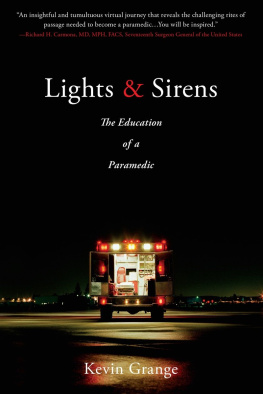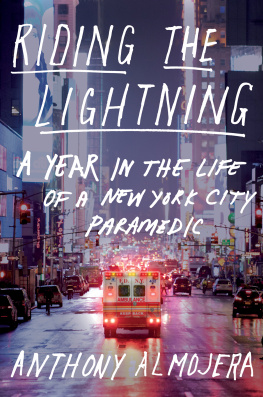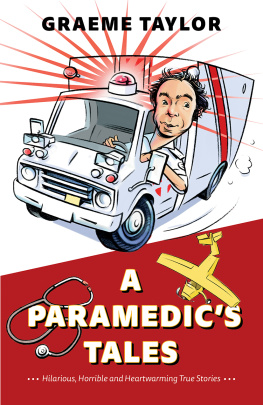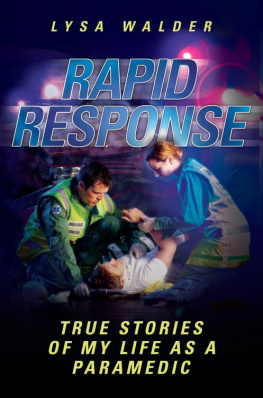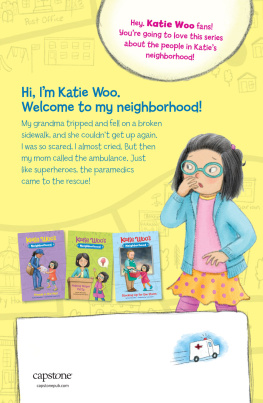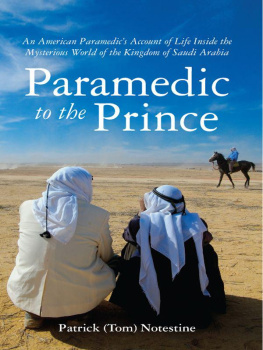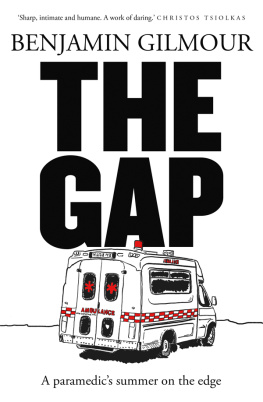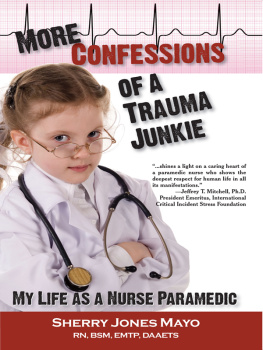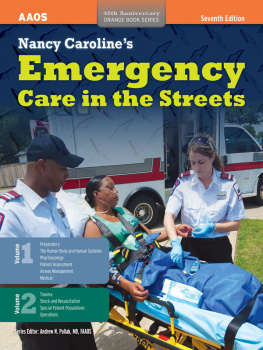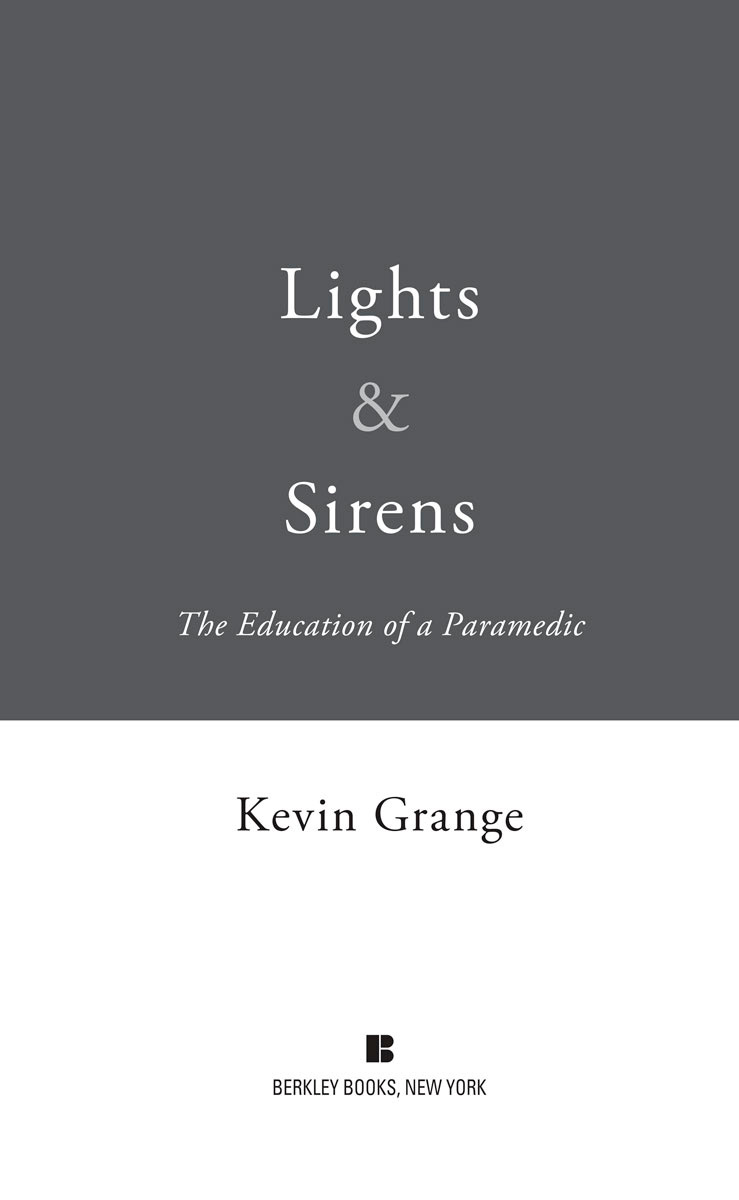Paramedic Kevin Grange has taken us on an insightful and tumultuous virtual journey that reveals the challenging rites of passage needed to become a paramedic. Come along for the ride, you will be inspired.
Richard H. Carmona, MD, MPH, FACS, Seventeenth Surgeon General of the United States
In his powerful memoir, Lights and Sirens: The Education of a Paramedic, Kevin Grange gives the public a raw, yet intimate view of the making of a paramedic on the gritty streets of Los Angeles. Throughout the narrative, Grange beautifully captures the emotions of his successes and failures as he tries to perfect the art of saving lives. His personal story within these pages is riveting and will only add to the legend of the first responder.
Paul A. Ruggieri, MD, author of Confessions of a Surgeon and The Cost of Cutting
Lights and Sirens is as fast-paced and thrilling as a ride along in a speeding ambulance. Kevin Grange takes you with him as he discovers the challenge, excitement, and stress of training to be a paramedic on the streets of Los Angeles.
Judy Melinek, MD, New York Times bestselling coauthor of Working Stiff: Two Years, 262 Bodies and the Making of a Medical Examiner
Kevin Granges Lights and Sirens is an authentic, compelling narrative of Granges journey through UCLA paramedic school and field internship on Los Angeless dangerous streets as he trains to save the lives of victims of heart attack, stroke, and trauma. Grange is an excellent writer who does a great service to his new profession in conveying not just the accurate details and heart-pounding excitement of the job, but also revealing the essential compassion of the truest caregivers. Lights and Sirens is a book to be appreciated by both the general public and the fire and emergency medical services community.
Peter Canning, author of Paramedic: On the Front Lines of Medicine

An imprint of Penguin Random House LLC
375 Hudson Street, New York, New York 10014
This book is an original publication of Penguin Random House LLC.
Copyright 2015 by Kevin Grange.
Penguin supports copyright. Copyright fuels creativity, encourages diverse voices, promotes free speech, and creates a vibrant culture. Thank you for buying an authorized edition of this book and for complying with copyright laws by not reproducing, scanning, or distributing any part of it in any form without permission. You are supporting writers and allowing Penguin to continue to publish books for every reader.
BERKLEY and the B design are registered trademarks of Penguin Random House LLC.
For more information about the Penguin Group, visit penguin.com.
eBook ISBN: 978-0-698-16198-6
Library of Congress Cataloging-in-Publication Data
Grange, Kevin.
Lights and sirens : the education of a paramedic / by Kevin Grange.First edition.
p. cm.
ISBN 978-0-425-27523-8 (paperback)
1. Grange, Kevin. 2. Emergency medical techniciansCaliforniaLos AngelesBiography. 3. UCLADaniel Freeman Paramedic ProgramStudentsBiography. 4. Emergency medical techniciansEducationCaliforniaLos Angeles. 5. Emergency medicineStudy and teachingCaliforniaLos Angeles. 6. Medical emergenciesCaliforniaLos Angeles. 7. Ambulance serviceCaliforniaLos Angeles. I. Title.
RA645.6.C2G73 2015
616.02'5071092dc23
[B]
2014045101
PUBLISHING HISTORY
Berkley trade paperback edition / June 2015
Cover photos: (front) Mike Powell / Getty Images; (back): welcomia / Shutterstock.
Cover design by Edwin Tse.
Photo on page 311 by Nanci Medina
This book describes the real experiences of real people. The author has disguised the identities of some, and in some instances created composite characters, but none of these changes has affected the truthfulness and accuracy of his story.
Penguin Random House is committed to publishing works of quality and integrity. In that spirit, we are proud to offer this book to our readers; however, the story, the experiences, and the words are the authors alone.

Version_1
This book is dedicated to my loving family, with infinite gratitude.
Contents
Introduction
The fate of the wounded rests with the one who applies the first dressing.
Nicholas Senn, MD
The 911 call came in on a Friday night in the summer of 2011 from a gritty part of Los Angeles known on the street as Ghost Town. As usual, it was a trauma. At the fire station on the corner of 124 East I Street and Avalon Boulevard, the lights flickered briefly, followed by the alarm tones, and then moments later, dispatch broadcast over the loudspeaker: Engine and rescue. A stabbing.
In the upstairs bunkroom where hed been resting, firefighter/paramedic Tim Hill leapt from his bed, sprinted to the fire pole, and began sliding down. The call also roused two other firefighters, who slid down immediately after Tim, and three more from the TV room downstairs, who hustled into the garage bay. And with that, Station 38 of the Los Angeles Fire Department woke to life: the lights on the apparatus floor blinked on, the station doors opened, and six firefighters could be seen stepping into rubber insulated boots, pulling up yellow turnout pants, and throwing on brush coats. The men moved with speed and precision, the result of years on the job.
And then there was methe paramedic intern.
Id just finished showering and was standing half-dressed in the upstairs locker room when the tones first went off. Before I even heard the nature of the call, I threw on a shirt, grabbed my watch, and tore down the hall. Forbidden to use the fire pole as an intern, I instead hurtled down the stairs toward the garage bay. A fall down those stairs would break my bones and knock me unconsciousbut far worse would be watching the ambulance leave without me. Just the week before, a classmate of mine whod been interning here on another shift had missed a calla double shooting at a recreation centerand I hadnt seen him since. No one had said anything but I didnt need to ask. Miss a call during your field internship of paramedic school and youre gone.
In the garage bay, the fire engine pulled out and I picked up the pace, leaping down the last five steps and sprinting across the apparatus floor to the ambulance.
Tim hopped into the drivers seat of the ambulance and hit the ignition. Firefighter/paramedic Eddie Higgins slid into the passenger seat next to Tim, radioed to dispatch that we were en route, and grabbed the map book. Tim shifted into drive, easing his foot off the brake.
I grabbed my gear, jumped into the back of the slow-rolling ambulance, and hollered, Im here! Settling into the captains seat, I yanked my turnouts on over my shorts and buckled my seat belt. Tim pulled out onto the street and activated the emergency lightsred and white LEDs flashing in 360 degrees. Less than three minutes had elapsed since the tones sounded and an anxious sweat had already replaced the dampness from my shower. The station doors thundered closed behind us and Rescue Ambulance 38 pulled out into the dark streets of L.A.

